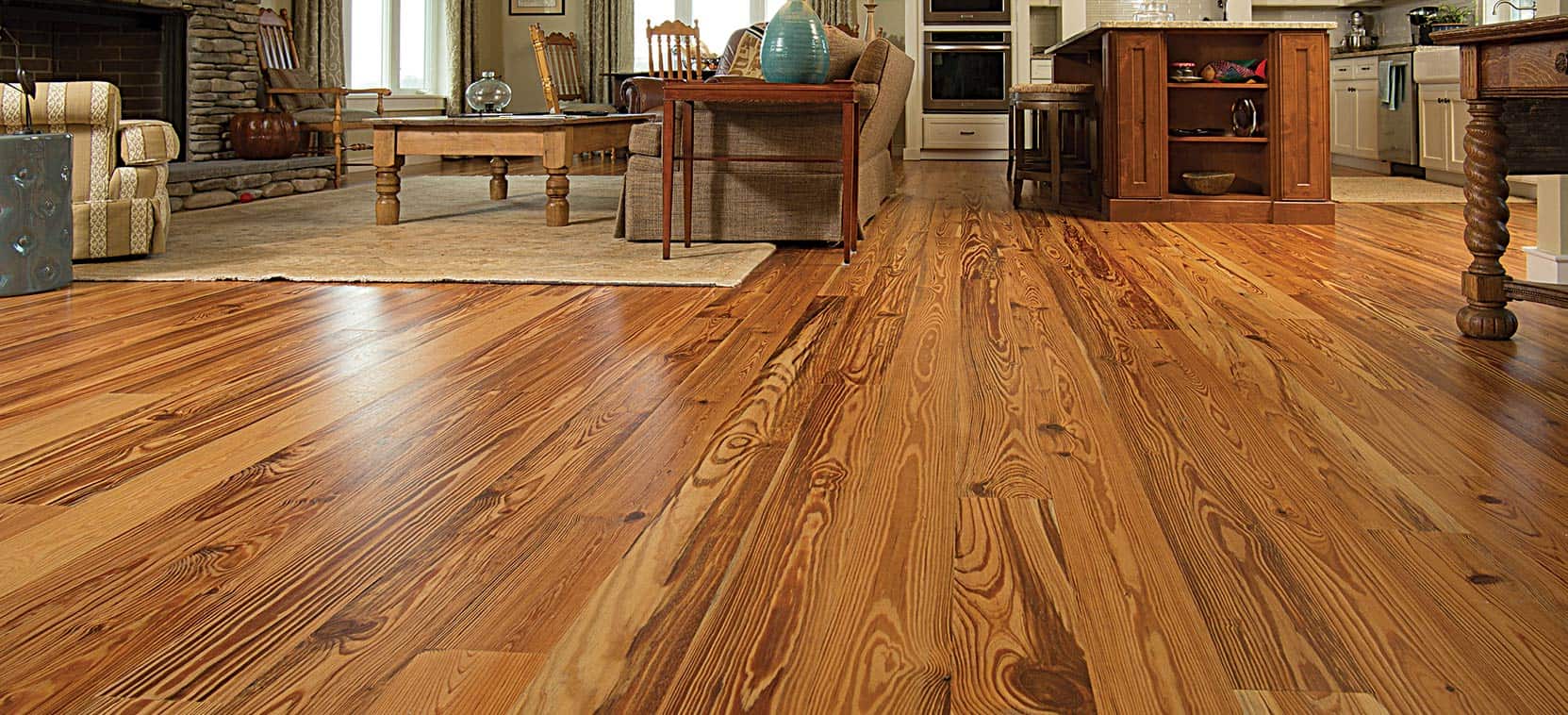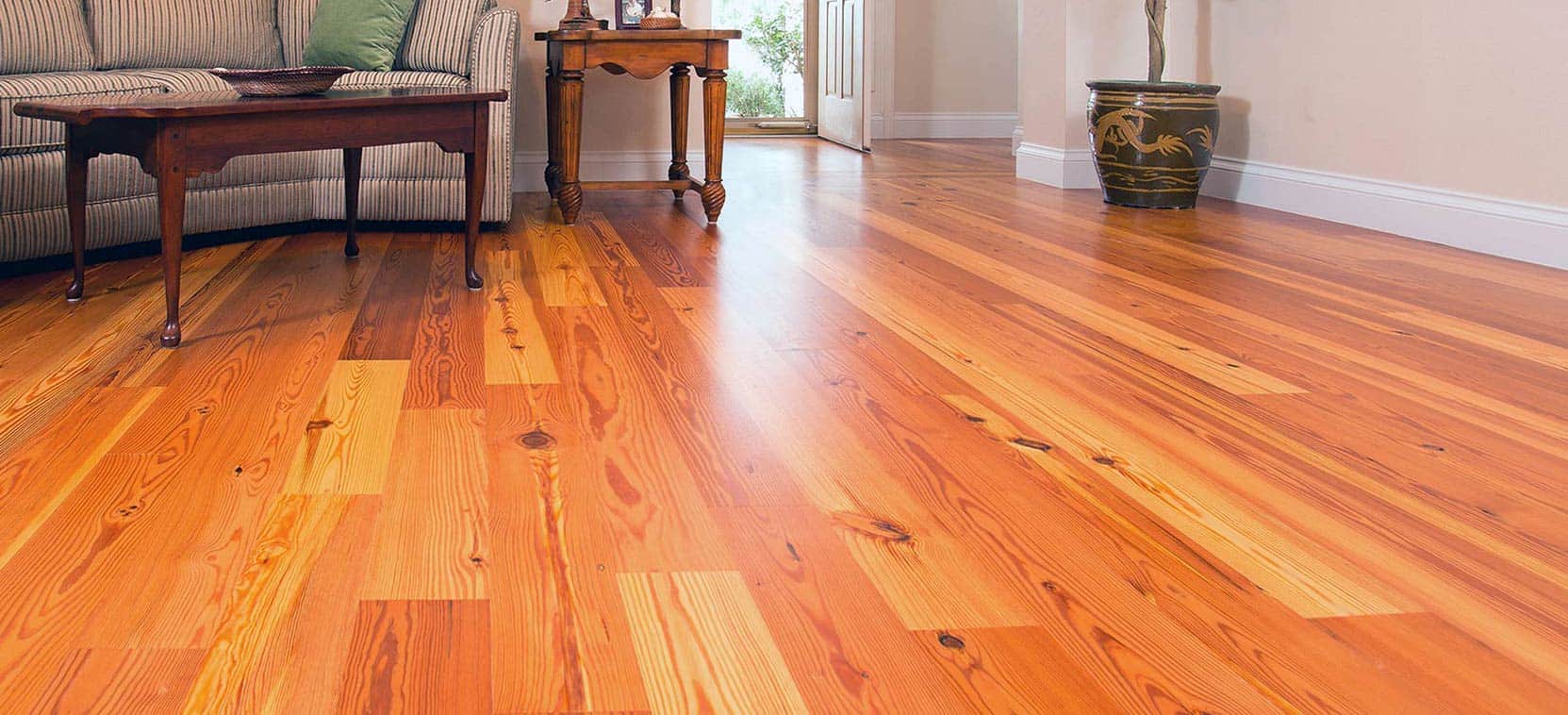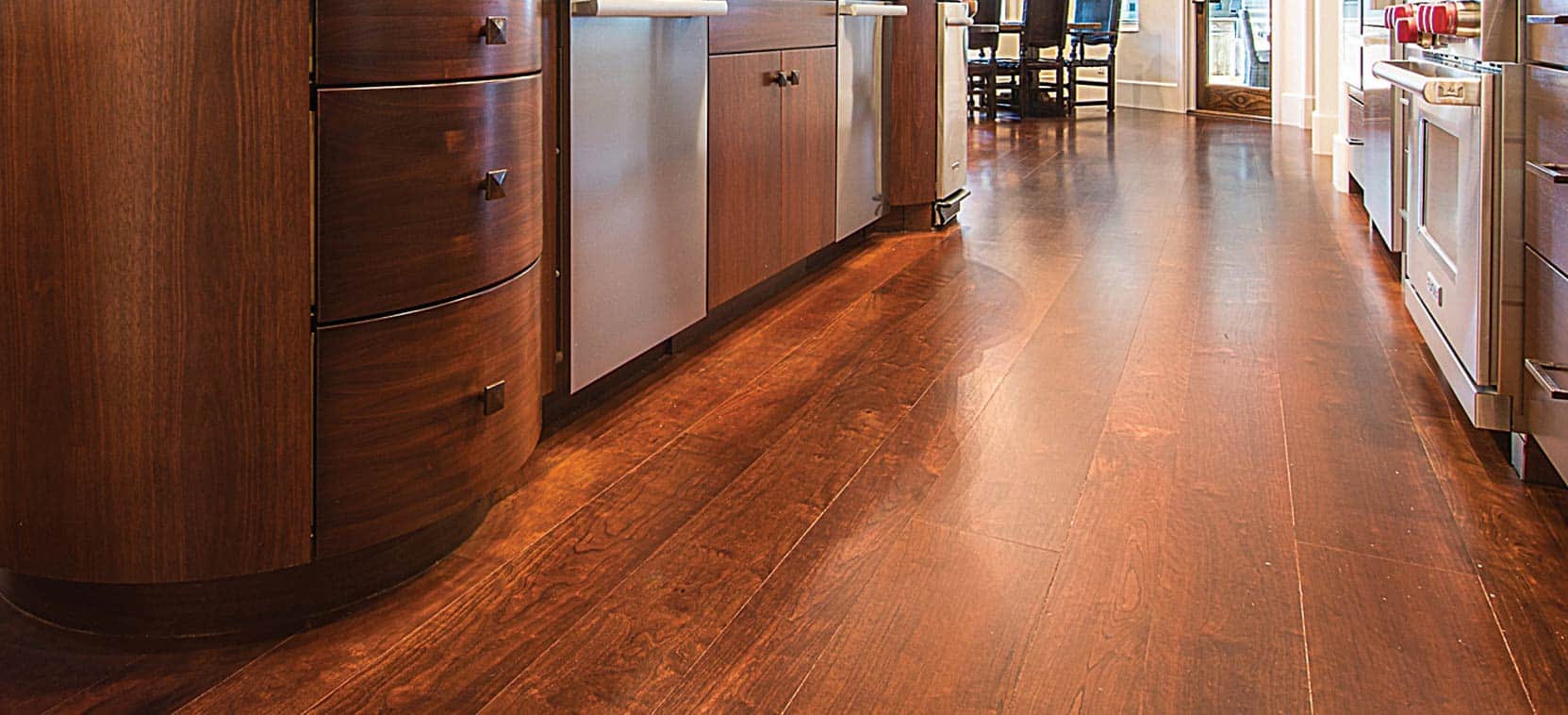Original Growth vs. Old and New Growth
Goodwin antique (or original growth) heart pine is guaranteed to be at least 200 to 500 years old, which means it is 100% heart wood and has the highest level of hardness and durability. Please note than New Heart Pine– sometimes called Old Growth and not offered by Goodwin– is usually 70-90 old and available by cutting down existing trees. This wood simply cannot be compared to antique heart pine. It is softer with 50 to 100% heart, has knots up to 2 inches, has only about 4 growth rings for a loose grain pattern, and is pale yellow with some red.
Old Growth’s Meaning
By Kathy Fleming, Hardwood Floors Magazine
Ask most people how old a piece of furniture must be to be considered a true antique and most will know the answer. At least 100 years old.
Ask most car buffs how old an automobile must be to be considered a classic and they too will know the answer. At least 25 years old.
If only it were that simple with antique wood floors.
It was…once upon a time. Whenever the terms old-growth, original-growth and antique were bandied about, the vast majority of us unconsciously agreed that meant o-l-d. Very old. We knew we were discussing trees from America’s first forests and wood that provided denser, superior lumber.
None of us really needed an exact definition. It was mainly the foresters and scientists who investigated the topic. The customers of specialty antique flooring manufacturers knew what they wanted and would never have thought to ask for the definition of the “old-growth” wood they were buying. And vast majority of the time, they got wood floors that truly were very o-l-d.
But today, as antique floors become trendy, the marketplace is buzzing with more choices, sizzling copywriting and fuzzy terms…making it harder for consumers and flooring pros to understand the distinctions. While “original-growth” and “antique” seem to be retaining their true meaning, the term “old-growth” in particular is becoming ambiguous.
What difference does it make, you may ask. First of all, anyone ordering this kind of floor is expecting a certain look and quality, and that’s what they should get. They are expecting to live with that floor for generations. And you just can’t fake an antique floor. The wood is denser, tighter-grained, stronger and unusual. It’s a bit like the new Thunderbirds. They are cool cars, but any enthusiast with a 1963 in the garage is going to speak at length on the differences. He will never be totally satisfied with the new model.
It also matters from an historical standpoint. Consumers who specify this wood also tend to value nature, history and Americana. If they have gone to the trouble to understand, research and select an old-growth wood, that’s the floor they deserve.
The need to keep the terms—and the standards—straight have sent several manufacturers into the deep recesses of scientific literature. One of them, Carol Goodwin of The Goodwin Company, one of the leading manufacturers of antique heart pine and heart cypress flooring, has a thick file of research to support clear cut terminology.
She and her colleagues share a wealth of information with each other, including this from a 1993 science conference: “Old-growth forests are those at least 200 years old and older. Most remaining old-growth forests are on federal lands. Nearly 90 percent of the region’s old-growth forests already have been logged. An estimated 8 to 9 million acres of old-growth forests remain today.”
Another study is from the 1989 National Old-Growth Task Group, which determined that “old-growth forests are ecosystems distinguished by old trees and related structural attributes. Old-growth encompasses the later stages of stand development that typically differ from earlier stages in a variety of characteristics which may include tree size, accumulations of large dead woody material, number of canopy layers, species composition and ecosystem function.”
Perhaps the most straight-forward definition comes from the USDA Forest Service, which said the approximate age at which old-growth features begin to appear is about one-half the maximum age of the predominant tree species.
No doubt, it’s a complicated subject that varies by species. In the case of longleaf pine, which can live 500 years of longer, foresters agree it takes at least 200 years for the tree to become mostly heartwood and be considered old-growth. They call any longleaf pine less than 200 years old “new heart pine.” Yet, there are heart pine flooring products on the market today that are about 75-90 years old and are called “old-growth.”
Another Forest Service report recommends that most stands with Virginia pine, loblolly, pitch pines and shortleaf pines that exceed 100 to 125 years with little human disturbance can be considered in the early stages of old-growth.
So, as always in a free market system, the buyer must be aware. Ask how old the trees were when harvested and ask about the color, the heart content, and the tightness of growth rings. And if someone tells you they are cutting down old-growth trees for flooring, that’s a problem. If these stately old gems aren’t protected, they should be.
After all, buying an antique floor isn’t so different from buying antique furniture. Antique lovers know what to look for when shopping. An authentic 1710 antique sideboard will bring them many more years of blissful enjoyment than a good reproduction. To them, it’s just not the same thing.









